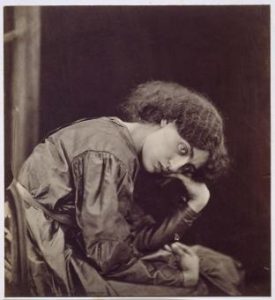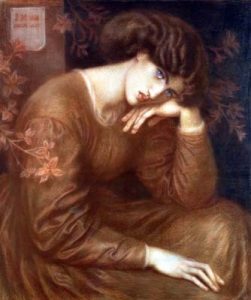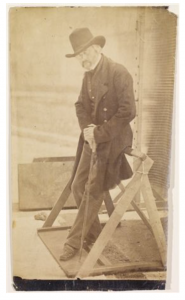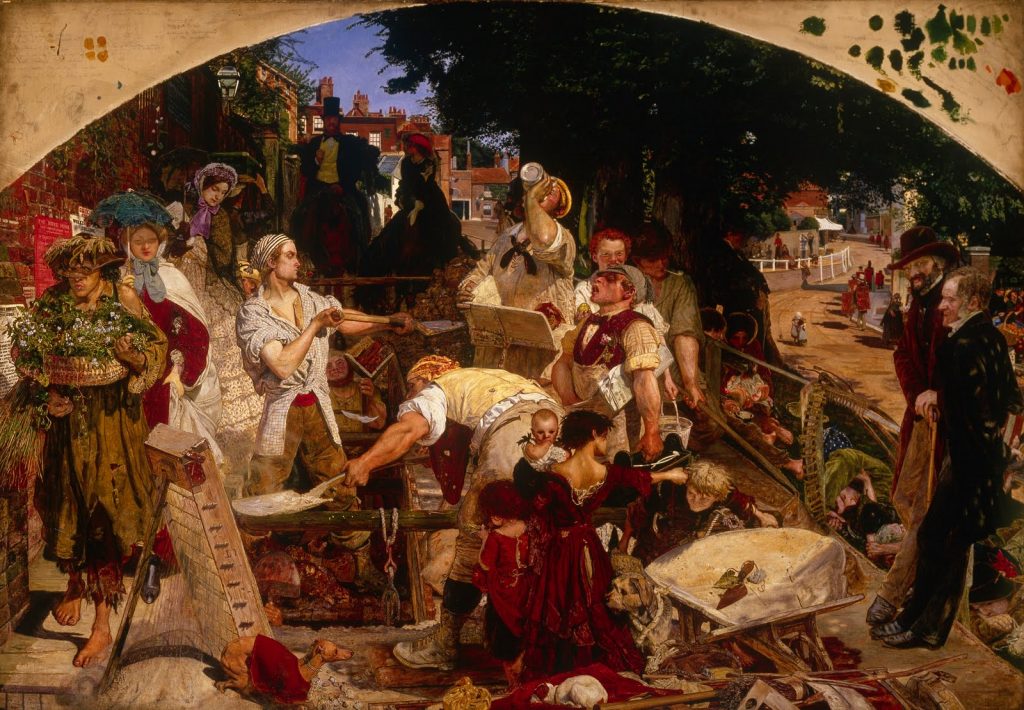I live and work in Birmingham which amongst other attributes has a wonderful city museum and art gallery with a particularly strong and widespread print collection. I have been ushered in through the ‘strongroom’ doors on a number of occasions to glimpse the collections. Most recently Victoria Osborne the gallery Fine Art Curator was kind enough to show me the photographs taken by John Parsons of Jane Morris under the direction of Dante Gabriel Rossetti in his Chelsea garden in 1865. I first was alerted to these series of posed photographs in the Painting with Light at Tate Britain in 2016. These photographs were from the V&A collection, but when I mentioned the exhibition to Victoria she offered to show me the Bmag examples from the collection.

One of the series of photographs is of Jane Morris leaning forward. I am not sure as yet, whether the studio photos were made as images in their own right or whether to be used for Rossetti’s paintings of Jane morris or his compositions she clearly featured in, including Reverie.

The only information I can locate is a short letter from Rossetti to Jane morris to establish the time of the session. It gives little away to the rationale behind the this use of photography.
Copy of a letter written by Rossetti to Mrs. Morris
Sunday Night [4 June 1865].
My dear Janey
The photographer is coming at II on Wednesday. So I’ll expect you as early as you can manage. Love to all at the Hole—
Ever yoursh
D. G. Rossetti
There is a lot more research required to understand what was the motivation for the photographic session.
On the theme of early use of the new medium of photography by painters Victoria brought to my attention the portrait of the writer and commentator Thomas Carlyle used by Ford Maddox Brown in his painting ‘Work’.

Clearly this photograph by Charles Thurston Thompson with Carlyle perched on the wood support was destined for the character on the far right of ‘work’.

Commentary on ‘one of the greatest and most radical paintings of the 19thC”
The Verb to ‘GET’ – Carlyle writes to Ford Maddox Brown to accept his request to be photographed using the term to GET.
Carlyle’s writings were known for their lively rhetoric which comes across in the letter he wrote to Brown agreeing to pose for the photograph:’I think it a pity you had not put (or should not still put) some other man than me in your Great Picture. It is certain you could hardly have found among the sons of Adam, at present, any individual who is less in a condition to help you forward with it … I very well remember your amiable request, and the promise I made to you, to ‘sit for some photographs.’ That promise I will keep; and to that we must restrict ourselves, hand of Necessity compelling. Any afternoon I will attend here, at your studio, or where you appoint me, and give your man one hour to get what photographs he will or can of me. If here, the hour must be 3½ pm (my usual hour of quitting work, or to speak justly, the chamber of work); if at any other place, attainable by horseback, it will be altogether equally convenient to me; and the hour may such as enables me to arrive (at a rate of 5 miles per hour we will say!)’ (F. M. Hueffer, ‘Ford Madox Brown: A Record of his Life and Work, p. 163)Again More research again needed to clarify the constructive and valuable adoption of photography by painters and drawing artists in these early days of the medium.

